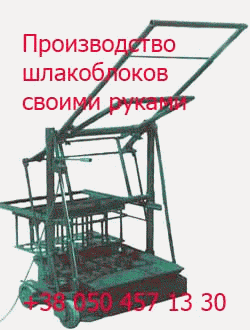Epoxy resin adhesives are characterized by their strength, long-term durability and high resistance to ambient conditions and chemicals. Owing to their excellent adhesion properties towards metals, mineral surfaces and wood, they have a wide field of applications in adhesive technology. In the car manufacturing, aircraft and building industries, the adhesives must meet specific requirements depending […]
Архивы рубрики ‘Adhesive Bonding’
Reactions of Epoxy Resins
 9 сентября, 2015
9 сентября, 2015  Pokraskin
Pokraskin The reaction between epoxides and polar substances may take place in two different ways, both of which are associated with an opening of the oxirane ring. Polymerization by Polyaddition In the manufacture of adhesives, the most important reaction type is the addition of a highly polar compound (hardener) to an epoxide with simultaneous ring opening […]
Epoxy Resin Adhesives
 8 сентября, 2015
8 сентября, 2015  Pokraskin
Pokraskin 5.5.1 Chemistry of Epoxy Resin Adhesives Epoxy resin adhesives are low-molecular-weight substances with a so-called ‘epoxy function’ — that is, a three-membered oxirane-ring composed of one oxygen atom linked to two carbon atoms (Figure 5.10). H H I I H-C-C-R / О Figure 5.10 The epoxy group. Among a variety of epoxy compounds available commercially, […]
Behavior and Applications of Phenolic Resin Adhesives
 8 сентября, 2015
8 сентября, 2015  Pokraskin
Pokraskin Phenolic resin PVF adhesives are available as liquid-solid products or in the form of ready-made adhesive films, with or without support material. Both types cure at temperatures above 150 °C and at a pressure of more than 4 x 105 N m~2, requiring corresponding equipment such as heated presses or autoclaves. The pressure is required […]
Formulation of Phenolic Resin Adhesives
 8 сентября, 2015
8 сентября, 2015  Pokraskin
Pokraskin During the early 1940s, with the major breakthrough in the development of versatile phenolic resin adhesives for the bonding of various materials, it was possible for the first time to use these adhesives for the bonding of metals. De Bruyne [23] added relatively large amounts (75%) of high-polymer polyvinyl formal (PVF) to brittle phenolic resin […]
Phenolic Resin Adhesives
 7 сентября, 2015
7 сентября, 2015  Pokraskin
Pokraskin 5.4.1 Chemistry of Phenolic Resins The starting monomers of phenolic resins are phenol and formaldehyde or paraformaldehyde. These are allowed to transform into low-molecular-weight resins called ‘novolaks’ (Figure 5.8) by a ‘careful’ polyaddition reaction under acid conditions, followed by transformation into resol resins under alkaline conditions (Figure 5.9). C-0 Formation of novolak from p-hydroxymethylphenol Figure […]
Trends in Hot-Melt Technology
 7 сентября, 2015
7 сентября, 2015  Pokraskin
Pokraskin Following developments reported in 2002, hot melts have been formulated for the paper and packaging industries which allow processing at temperatures around 100 °C, thus alleviating the thermal stress to which the hot melts and substrates to be joined are exposed [19] (see Section 8.5). If the setting period of hot melts is very short, […]
Epoxy Resin-Based Reactive Hot Melts
 7 сентября, 2015
7 сентября, 2015  Pokraskin
Pokraskin Epoxy resin-based RHMs are also applied as a melt, but they solidify to build a thermosetting polymer network that cannot be re-melted (see Section 5.5). Compared to thermoplastic hot melts, they have a higher inner strength and are used primarily in car manufacture. These adhesives are delivered as one-part reactive pre-polymer systems with a long […]
Polyurethane-Based Reactive Hot Melts
 6 сентября, 2015
6 сентября, 2015  Pokraskin
Pokraskin For the production of reactive hot melts (RHMs) which set under the effect of moisture, a polyurethane prepolymer is generated from solid rather than liquid starting polymers, primarily using polyester polyols (see Section 5.6) [16]. After the application of a reactive hot melt, the solidified bond has sufficient initial strength to allow transportation and further […]
Self-Bonding Varnishes
 4 сентября, 2015
4 сентября, 2015  Pokraskin
Pokraskin Self-bonding varnishes, which are used primarily in the manufacture of coreless, self-supporting coils in the electronics industry, contain a dissolved thermoplastic adhesive based on copolyamides. The coils are manufactured by coating the wires with self-bonding varnishes, allowing the solvent to evaporate, winding the wires into coils and thermally bonding them. Such coils are used to […]
 Опубликовано в рубрике
Опубликовано в рубрике 
